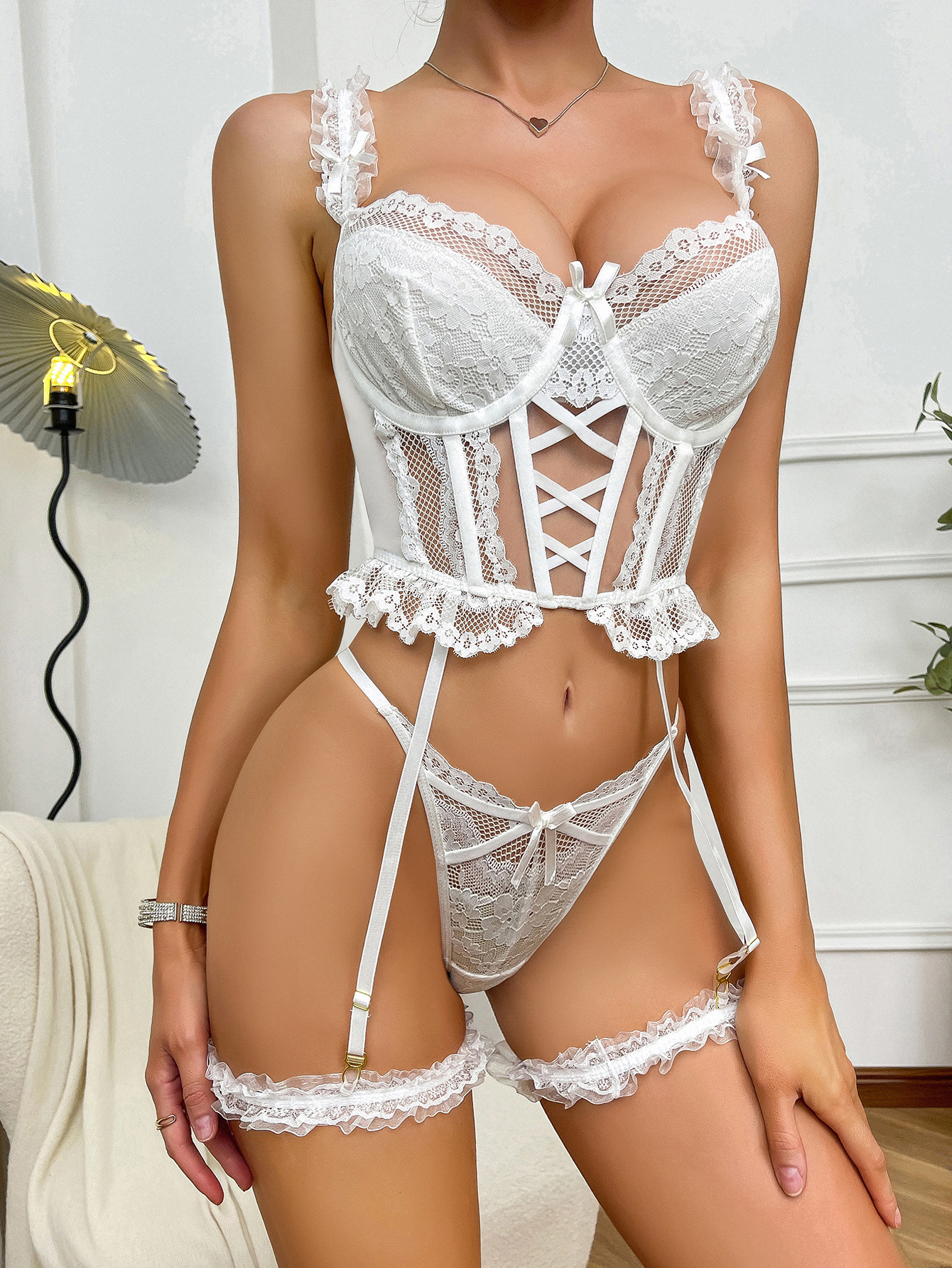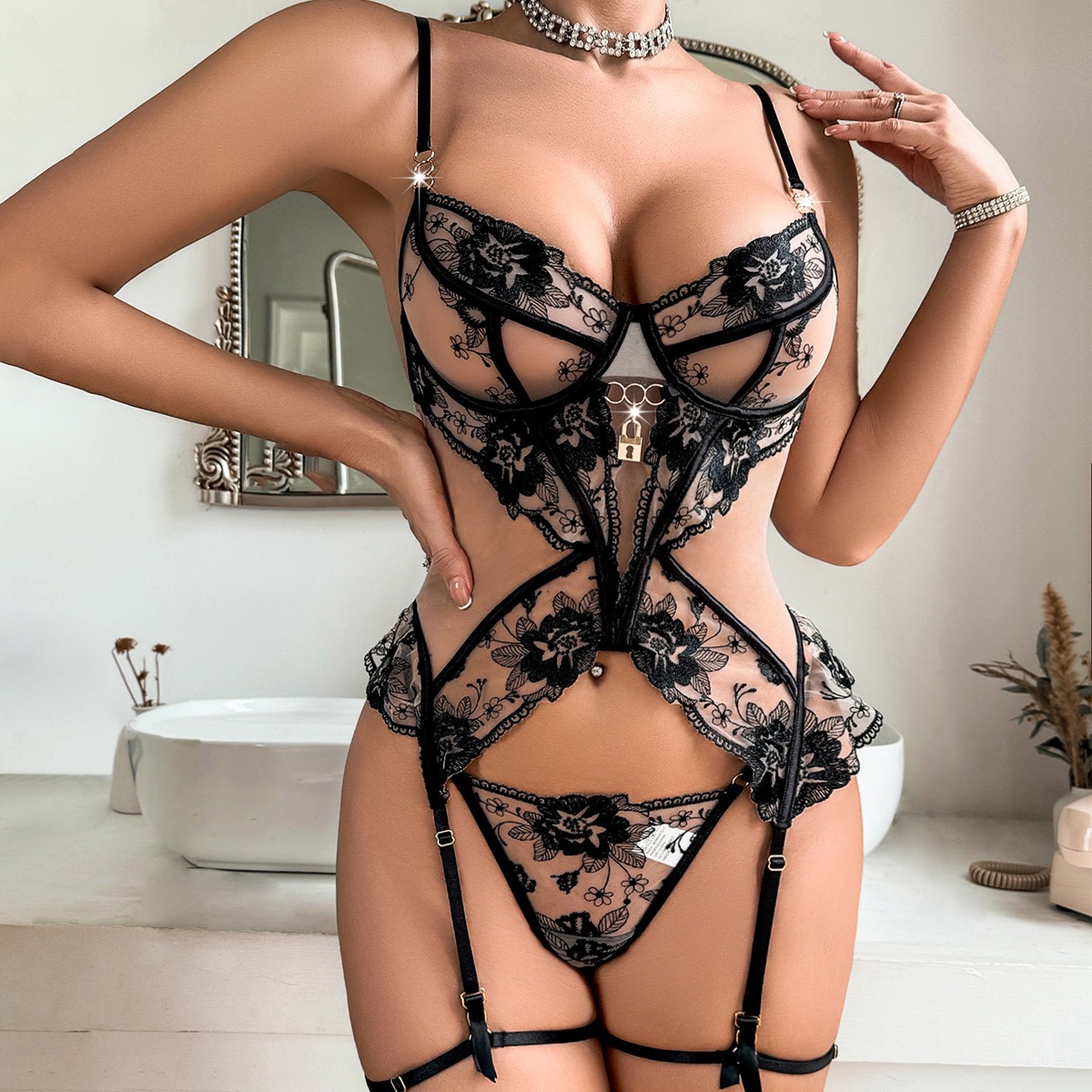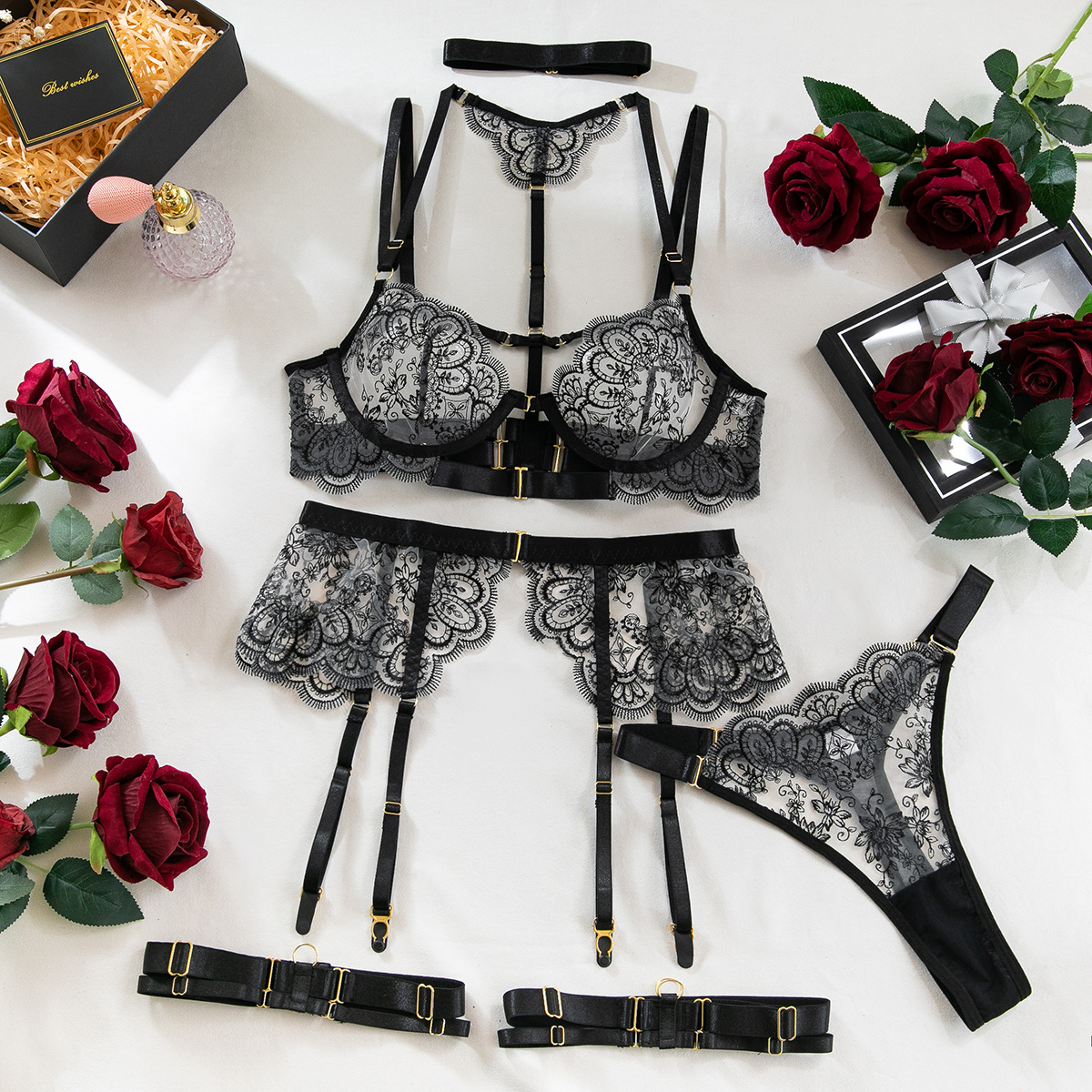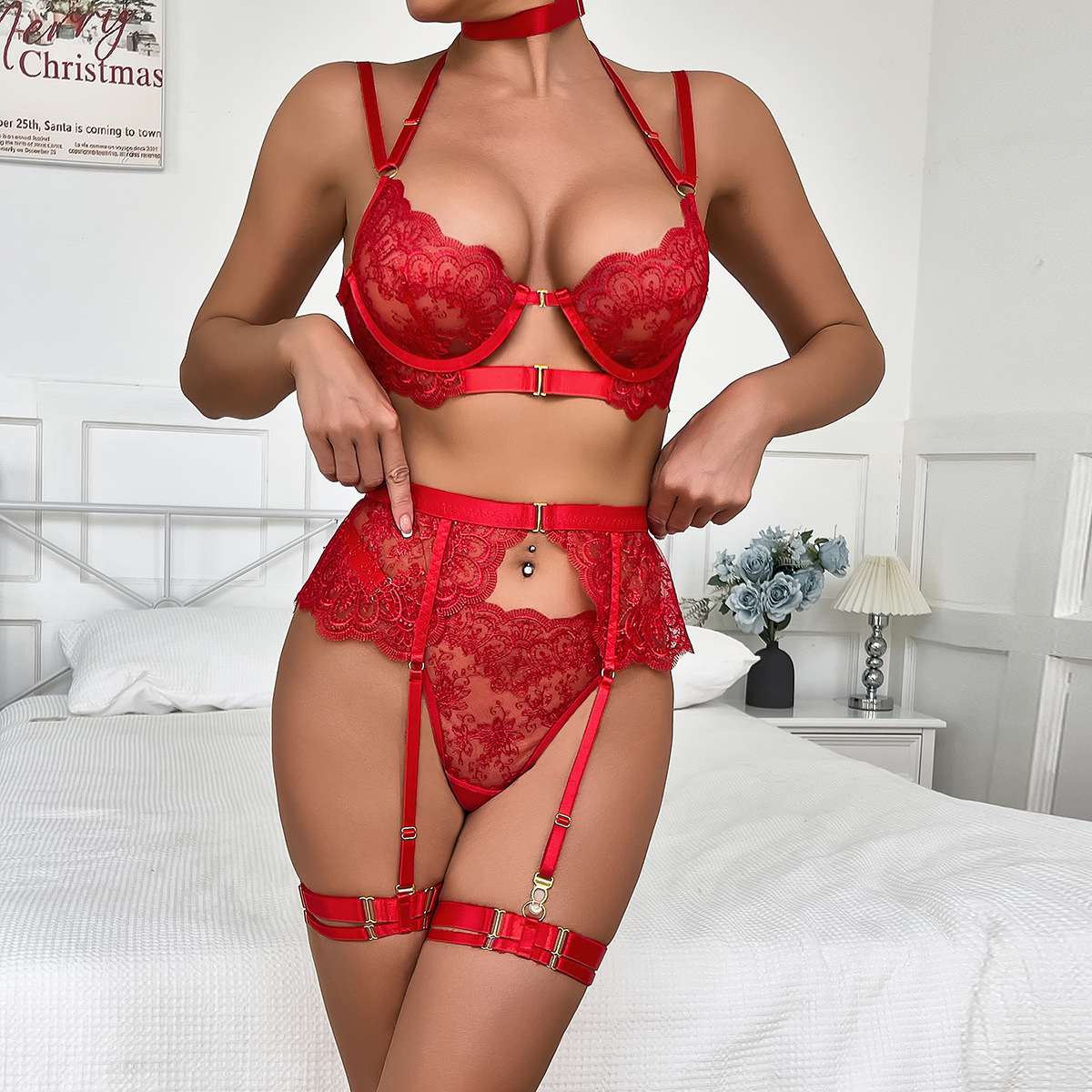Factors Affecting Sexy Apparel Wholesale Prices
-
Factors affecting sexy apparel wholesale prices. What drives costs, from materials to production, to make smarter business decisions.


The evolution of erotic lingerie in wholesale market is a fascinating topic. This industry has changed dramatically over time. It has moved from purely functional to fashionable. Early designs were often restrictive. Now, they focus on comfort and self-expression. Consumer demand drives these changes. Technology and social media also play a big role. Businesses must stay updated on these shifts. This allows them to meet new customer needs. Understanding this evolution is crucial for success. It helps you prepare for the future.
From Niche to Mainstream
Erotic lingerie was once a very niche product. It was often hidden away in specialty stores. The styles were limited and traditional. Today, it is much more mainstream. You can find it in large retail chains. Social media platforms have made it more visible. Brands now market it openly. This widespread acceptance has created new opportunities. The market has expanded globally. This shift has changed everything for wholesalers. It created a need for more diverse products.
JSY: Your Premier Erotic Lingerie Wholesale Partner
JSY (Jishiyuan Garment Co., Ltd.) has established itself as a leading force in wholesale intimate wear. With over 15 years of experience, JSY specializes in designing, manufacturing, and distributing intimate apparel. The company operates a modern 10,000 m² production facility with monthly capacity exceeding 200,000 garments. JSY’s commitment to quality is demonstrated through successful Sedex audits.
JSY’s comprehensive erotic lingerie wholesale services extend beyond simple product supply to include full business support for retail partners. The company offers design consultation, trend analysis, and customization services to help retailers differentiate their offerings. Advanced quality assurance programs ensure consistent product excellence, while flexible ordering options accommodate various business sizes and requirements.
JSY maintains strong relationships with fabric suppliers and component manufacturers, ensuring access to premium materials and innovative technologies. The company’s global distribution network enables efficient delivery to international markets, supported by experienced logistics teams. For retailers seeking reliable erotic lingerie wholesale partnerships, JSY provides the expertise, capacity, and commitment necessary for mutual success. We invite you to contact JSY today to explore how our comprehensive wholesale solutions can support your business growth and market expansion.

The Shift in Design Philosophy
Early designs were often about control and rigid forms. Corsets and girdles were popular. They reshaped the body. Modern designs are very different. They prioritize comfort and natural shapes. Fabrics are softer and more flexible. The focus is on empowerment and confidence. Styles have become more creative. They include bold cutouts and unique patterns. This shift reflects changing societal attitudes. It is a key part of the evolution of erotic lingerie in wholesale market. The new philosophy is about feeling good.
New Materials and Technologies
The materials used in lingerie have changed. Traditional fabrics like cotton and silk are still popular. But new materials have emerged. Microfiber and modal offer incredible softness. Spandex adds stretch and comfort. Technology has also made an impact. Seamless technology creates a smooth look. It makes the garments more comfortable. New dyeing techniques allow for more vibrant colors. These innovations have expanded design possibilities. They have also improved durability.
Key Factors in the Evolution of Erotic Lingerie in Wholesale Market
Several factors drive market change. Businesses must pay attention to them. Understanding these drivers helps you stay ahead.
- Social Media Influence: Instagram and TikTok set new trends. They create visual inspiration for buyers.
- Body Positivity: The industry now caters to all body types and sizes. Inclusivity is a major focus.
- Sustainability: Consumers want eco-friendly and ethically made products.
- Technology: New fabrics and manufacturing processes improve products.
- Self-Expression: Lingerie is now a tool for personal expression and confidence.
These factors shape consumer preferences. They are the driving force behind the market’s evolution.
Changes in Consumer Demographics
The customer base has broadened significantly. Once a very specific market, it is now diverse and dynamic. People of all ages and genders are represented. Awareness of fabrics has grown, and buyers expect better quality and ethical production. Reviews are often consulted before purchasing. Many also seek brands that reflect their values. This shift requires a fresh marketing approach. Authenticity and transparency are now vital for success. To thrive, brands must build genuine connections with their audience.
The Role of E-commerce
E-commerce has completely transformed the market. Online stores offer convenience and privacy. They provide a global reach for wholesalers. Digital marketing has become crucial. Brands use social media to showcase products. They can target specific demographics with ads. This has made the market more competitive. It has also made it more accessible. Small brands can now compete with large ones. E-commerce is a primary driver of the evolution of erotic lingerie in wholesale market. It provides direct access to customers.

The Rise of Inclusivity
Inclusivity is a major theme in the market. Brands are now offering a wider range of sizes. They are using diverse models in their campaigns. This trend is a response to consumer demand. Consumers want to see themselves represented. This body-positive movement is changing the industry. It is a sign of a more progressive market. Brands that embrace inclusivity build loyalty. They attract a wider customer base. This shift is a core part of the market’s evolution.
The Focus on Sustainability
Sustainability is no longer a niche. It is a key consumer demand. Consumers are looking for eco-friendly materials. They also want products made with ethical labor. Brands are responding with new practices. They use recycled fabrics and reduce waste. They also ensure fair wages for workers. This focus on sustainability builds a positive brand image. It appeals to environmentally conscious buyers. It is a vital part of modern business strategy.
From Function to Fashion
Historically, lingerie had a clear function. It was either for shaping or for special occasions. Today, it has become a fashion statement. People wear it as outerwear. They layer it with other clothing. This trend has expanded the market. It has created new opportunities for designers. Lingerie is now seen as a form of art. It allows for more creative expression. This move from function to fashion is a defining characteristic of the market.
The Growth of Subcultures
The market has branched into many subcultures. Each has its own unique style. For example, cottagecore lingerie is soft and romantic. It uses delicate lace and ribbons. Gothic lingerie is dark and edgy. It uses black fabrics and metal details. These subcultures provide new opportunities. They allow brands to specialize. A brand can focus on one niche. This can build a very loyal following. It is a result of the market’s expansion.
The Impact of Supply Chains
Supply chains have become more complex. They must be flexible and efficient. The demand for new products is constant. Wholesalers need to respond quickly. A transparent supply chain is also important. Consumers want to know where products come from. They care about ethical sourcing. This has changed how businesses operate. A modern supply chain is a competitive advantage.
| Era | Design Philosophy | Key Materials |
| Early 20th Century | Body Shaping, Corsetry | Silk, Cotton, Stiff Fabrics |
| Mid-20th Century | Pin-up, Glamour | Satin, Nylon, Lace |
| Late 20th Century | Comfort, Simplicity | Spandex, Blends, Cotton |
| Modern Era | Empowerment, Inclusivity | Microfiber, Modal, Recycled Fabrics |
This table provides a simple look at the history of lingerie design. It helps you understand the major shifts.
FAQ
How has consumer demand driven the evolution of the lingerie market?
Consumer demand has become the primary driver of market evolution by shifting its focus from a niche, exclusive product to one centered on personal expression and inclusivity. Modern consumers, particularly younger generations, seek out lingerie that reflects their values, such as body positivity, sustainability, and ethical production. They demand more comfortable and diverse styles that cater to all body types and genders. Brands that have successfully adapted to these demands, through inclusive sizing and transparent business practices, have seen significant growth and built a more loyal customer base, demonstrating the power of consumer-driven change.
What is the significance of technology in the modern lingerie market?
Technology has played a crucial role in modernizing the lingerie market by introducing new materials and manufacturing processes that improve product quality and comfort. The development of soft, breathable fabrics like modal and microfiber, and the integration of stretchy spandex, has allowed for more flexible and comfortable designs. Seamless technology has also created a smoother aesthetic and better fit. Additionally, e-commerce platforms and digital marketing tools have expanded the reach of wholesalers, making it easier for them to connect with global buyers and for small brands to compete with larger ones.
Why is a focus on inclusivity important for wholesalers today?
A focus on inclusivity is no longer just a trend but a business necessity for today’s wholesalers. The market has moved beyond a narrow beauty standard, and consumers are actively looking for brands that represent them. By offering a wider range of sizes, including plus-size options, and featuring diverse models in marketing campaigns, wholesalers can tap into a much larger customer base. This approach builds trust and brand loyalty, as it shows that a company values and respects its entire audience. Ignoring this shift means losing out on a significant and growing market segment.




